‘Make way for the Molly Maguires!’ The Ancient Order of Hibernians and the Irish Parliamentary Party, 1902–14
Published in 20th-century / Contemporary History, Features, Home Rule, Issue 1(Jan/Feb 2012), Volume 20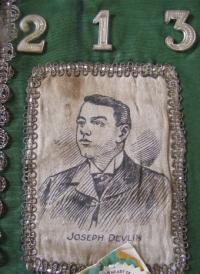
Joe Devlin and as commemorated on an AOH collarette. The coming man of constitutional nationalism, he described the AOH as ‘a Catholic organisation with a membership of nearly one hundred thousand’. (seanfderry-studenna)
Both nationalist and unionist opponents
For those loyal to the national cause, Home Rule constituted the Promised Land; for those outside the party fold, the prospects appeared far less enticing, however. Undoubtedly, the Hib bogeyman lurked prominently in the nether regions of the unionist psyche. At Edward Carson’s mass rally in Omagh in December 1911, Andrew Horner, MP for South Tyrone, warned that although the main IPP adjunct, the United Irish League, might disappear under a Dublin parliament,
‘a far more dangerous force would dominate the future of Irish politics—the Ancient Order of Hibernians—a bitterly sectarian and secret society with a long dark and cruel history. Its avowed objects were complete separation, and, as a means to that end, the expulsion of all Unionists—the British garrison—from the country.’
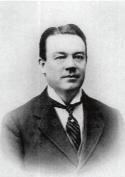 Nonetheless, opprobrium for all things Hibernian was never a wholly unionist preserve. William O’Brien MP, arch-conciliator and leader of the Cork-based All-for-Ireland League, depicted the IPP as the victim of a Hibernian ‘Frankenstein of their own raising which in Ireland passes by the name of “Molly Maguire”’. In 1909, delivering an address at confirmation in Carrickmore, Co. Tyrone, Cardinal Michael Logue described the order as ‘a pest, a cruel tyranny, and an organised system of blackguardism’. Not only was ‘drinking and dancing till the small hours of the morning’ taking place in Hibernian halls, but local Hibernians ‘endeavoured to compel others to join the order by means of boycotting, threatening . . . waylaying and beating persons who did not join’.
Nonetheless, opprobrium for all things Hibernian was never a wholly unionist preserve. William O’Brien MP, arch-conciliator and leader of the Cork-based All-for-Ireland League, depicted the IPP as the victim of a Hibernian ‘Frankenstein of their own raising which in Ireland passes by the name of “Molly Maguire”’. In 1909, delivering an address at confirmation in Carrickmore, Co. Tyrone, Cardinal Michael Logue described the order as ‘a pest, a cruel tyranny, and an organised system of blackguardism’. Not only was ‘drinking and dancing till the small hours of the morning’ taking place in Hibernian halls, but local Hibernians ‘endeavoured to compel others to join the order by means of boycotting, threatening . . . waylaying and beating persons who did not join’.
Joe Devlin and Belfast Hibernianism
The real point of departure emerged with the movement’s adoption by the coming man of constitutional nationalism, Joe Devlin. Belfast Hibernianism demonstrated the evolution of a rural lower-class network within a religiously polarised urban environment. The Catholic migrants who flooded into the city’s expanding labour market from the middle of the nineteenth century carried with them their cultural and political baggage, if very little else. In these circumstances, Devlin harnessed the Hibernians’ potential for mobilisation to thwart and then defeat Bishop Henry’s clerical dominance of nationalist politics in the city. In essence, Devlin built his early career on routing Henry’s Catholic Association, taking control of the Healyite Irish News in the process. Devlin’s platform oratory not only earned him the nickname ‘Pocket Demosthenes’ but also, with its fusion of militant popular nationalism, democratic shibboleths and working-class welfarism, virtually guaranteed IPP dominance over nationalist Belfast for a political generation.
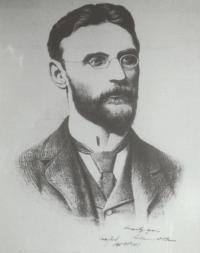
William O’Brien MP, arch-conciliator and leader of the Cork-based All-for-Ireland League, depicted the IPP as the victim of a Hibernian ‘Frankenstein of their own raising which in Ireland passes by the name of “Molly Maguire”’.
The decade before the Home Rule crisis also witnessed a struggle for control of northern Hibernianism between Devlin and the Irish Republican Brotherhood (IRB), which began in earnest when the American and Irish orders united in 1902. The previous March, Devlin had visited America to secure funding for the United Irish League. He would visit America again in 1903, and the order’s massive power and electoral influence along the eastern seaboard, especially in the machine politics of the American Democratic Party, impressed the West Belfast ward boss.
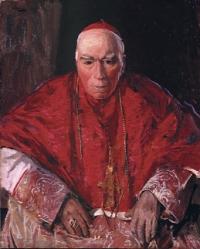
Cardinal Michael Logue by Sir John Lavery—in 1909, delivering an address at confirmation in Carrickmore, Co. Tyrone, he described the order as ‘a pest, a cruel tyranny, and an organised system of blackguardism’. (Felix Rosensteil’s Widow & Son Ltd)
Thirdly, and more speculatively, Devlin sought to exploit the union of American and Irish orders to boost ailing party funds and strengthen constitutionalism in America. Owing to the significant Fenian Clan na Gael element in the American AOH, early Hibernian ambivalence towards violence assisted Devlin’s efforts. During his 1901 fund-raising mission, Devlin asked his New York audience ‘to give our movement a fair chance’, despite the presence of ‘many men in America who think the means which we are operating to-day . . . are not sufficiently sharp and decisive’. Devlin continued:
‘When equipped with comparative freedom, home rule, then would be time for those who think we should destroy the last link that binds us to England to operate by whatever means they think best to achieve that great and desirable end. I am quite sure I speak for the United Irish League on this matter.’
Irish AOH becomes more constitutional
This ambiguity gradually cleared in 1905–6, as it became apparent that Devlin was using the AOH for solely constitutional purposes. In September 1904, the RIC inspector general noted the ‘more cordial’ relationship between the UIL and the AOH ‘in the North of Ireland. Several members of parliament have recently joined the ranks.’ Devlin organised a convention in Belfast to have the Ribbonmen registered as a ‘benefit society, the object being to obviate by this the hostility of the Roman Catholic clergymen to the AOH owing to its secret character’. While republican involvement in the American AOH thwarted his transatlantic designs, over the next two years Devlin steered the domestic movement on a constitutional course, jettisoning the Fenian dead wood that refused to accept the new dispensation but maintaining the strident militant rhetoric that kept the expanding grass roots in his thrall. The ideological basis of Hibernianism took shape during this two-year period, wherein a newfound political respectability coexisted with the lingering vestiges of visceral Ribbonism. Popular support rested on the Hibernian self-image as an ‘uprising of democracy’ against the twin evils of Orange and Tory discrimination and the professional and clerical monopoly of nationalist politics. Nonetheless, at the 1905 St Patrick’s Day Hibernian demonstration at Drumullan, Co. Tyrone, the RIC commented that ‘more respectable people appear to have attended than in former years. The placard posted up announcing the meeting said it would be a combined meeting of the AOH and UIL and it was addressed by two officials of the latter.’
In the same report, the county inspector noted the recent establishment of nine GAA clubs in Tyrone. The report covered the main aspects of the developing Board of Erin agenda: a rise in middle-class and ‘respectable’ membership, coinciding with nominal take-over of the United Irish League; the Board’s support for the Irish-Ireland movement; and the calendar of nationalist and religious demonstrations. What this idyllic picture of a patriotic, united and cultural fraternity ignored, however, was Drumullan’s location in ‘loyalist territory’.
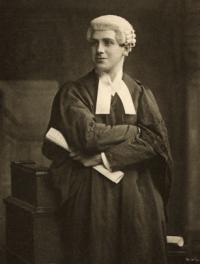
Tom Kettle—future lecturer in economics at the National University and First World War casualty—secured selection as the nationalist candidate for the East Tyrone parliamentary constituency in 1906, with the local IRB claiming that he was ‘pitchforked’ into the Hibernians to guarantee his election. (Ways of War, 1917)
Expansion
Over the next two years, with the shackles of clerical condemnation removed and the AOH securely under Devlinite control, the Board of Erin swelled to 80 divisions in Tyrone alone. Interestingly, Devlin took little notice of the previous Hibernian demand for democratic parliamentary selection from within the local order. Tom Kettle, future lecturer in economics at the National University and First World War casualty, secured selection as the nationalist candidate for the East Tyrone parliamentary constituency in 1906, with the local IRB claiming that he was ‘pitchforked’ into the Hibernians to guarantee his election. The Hibernians represented formidable electoral foot-soldiers nonetheless; Kettle’s election ‘caused a very bitter feeling between the Orange and Nationalist parties’ and a serious disturbance took place on 26 July 1906, when ‘police on duty were also badly stoned and were compelled to charge dispersing the mobs’. Sustained rioting took place at the Moy, with a police bayonet charge. A local nationalist was shot and killed in Stewartstown during early electioneering, and a Coagh riot that August included numerous revolver shots, with ‘steel knuckles’ in open usage. This tension permeated every aspect of communal life: Protestant workers threatened to strike because a Catholic employee carried Kettle’s portrait into a Cookstown factory.Nevertheless, for the party leadership, and Devlin in particular, the AOH’s greatest utility was as an instrument of discipline. The AOH’s growing role within nationalist politics coincided with the Liberals’ landslide election victory in 1906, a development that opened opportunity for advance after a generation of Tory government. When Augustine Birrell, the new Liberal chief secretary, introduced the Irish Council bill on 9 May 1907, however, the limited devolution on offer fell far short of popular expectations. After initial acceptance of the measure John Dillon rejected it, in large part owing to Devlin’s influence, a decision ratified at the United Irish League national convention on 21 May. Interestingly, Devlin enlisted ‘four or five hundred’ Hibernians ‘to fill the hall’ at a subsequent rally in Dublin’s Mansion House. A dependency culture therefore developed within the party leadership, whereby, fulfilling his role as political fixer, Devlin employed the Ribbonmen to crush all ‘factionist’ tendencies.
Populist instinct
In the first decade of the twentieth century, then, the AOH evolved from a marginal, plebeian political network in south-west Ulster to the major force within the ranks of the IPP, with membership soaring from 5,000 in 1900 to 64,000 in 1909. This figure mushroomed again when Devlin seized opportunities presented by Lloyd George’s 1911 National Insurance Act. The Hibernians became an approved society under the act and the immense sums at the order’s disposal appeared to ensure both its perpetual existence and its growing influence, with Devlin himself estimating Hibernian membership at 100,000. This marked Devlin out from many within the party leadership who viewed the Liberals’ welfare programmes as a threat to the powerful vintners’ lobby and new Catholic landed interest. Devlin relied heavily on the backing of the drinks trade. Nonetheless, he supported the 1909 ‘people’s budget’ and Insurance Act, as a means both of securing his lower-class northern base and of expanding the influence of the Board of Erin. Indeed, Devlin held relatively progressive stances on various labour issues. In essence, however, Hibernianism, or its Devlinite manifestation, relied primarily on a populist instinct common to many nationalist movements. There were two identifiable features of this populist programme: an appeal to Catholic interests and staunch nationalism epitomised by the catch-cry of ‘faith and fatherland’, and the movement’s consistent self-portrayal as a democratic upsurge capable of addressing the desires of all classes and creeds, with the important qualification that demands would not infringe on élite interests. Popular Hibernianism therefore contained an elementary class-consciousness, but class warfare represented anathema, as demonstrated by Hibernian opposition to Jim Larkin during the 1913 Lockout. Larkin himself claimed that ‘the men who were responsible for that strike and the prolongation of it were J.D. Nugent [AOH national secretary] and the “scabs”. He would teach them, as the United Irishmen did in past times, that they would have no sectarianism in this country’. Hibernian resistance to organised labour raises important ideological questions. Traces of Hibernianism were apparent in Eoin O’Duffy’s Blueshirts, and subsequent far-right populism represented a typically Irish fusion of the international and native—with its antecedents in the indigenous cross-class Catholic nationalism of Hibernianism and its contemporary relevance in Continental fascism. In essence, the AOH represented a vehicle for Irish nationalism that fed on the sectarian nature of early twentieth-century Irish politics. Its southward expansion rested more on its efficacy as a patronage, brokerage and recreational association than on any prevailing sectarian temper, however. These shallow roots of Hibernianism were ill prepared for the convulsions that shook constitutionalism with the onset of the Ulster crisis, the First World War and the re-emergence of republicanism in the aftermath of the Easter Rising. In some respects, the militant nationalism that underpinned Hibernian rhetoric failed to keep pace with the assimilative and increasingly pro-imperial trajectory of the IPP leadership, particularly after the outbreak of the First World War, with the result that many former Hibernians, particularly of the post-Insurance Act variety, found a home in the rising Sinn Féin movement. HI
Fergal McCluskey teaches history at Coláiste Feirste and is a former IRCSSH fellow at NUI, Galway.
Further reading:
P. Bew, Conflict and conciliation in Ireland, 1890–1910: Parnellites and radical agrarians (Oxford, 1987).A.C. Hepburn, Catholic Belfast and nationalist Ireland in the era of Joe Devlin, 1871–1934 (Oxford, 2008).F. McCluskey, Fenians and Ribbonmen: the development of republican politics in east Tyrone, 1898–1918 (Manchester, 2011).W. O’Brien, An olive branch in Ireland (London, 1910).
















